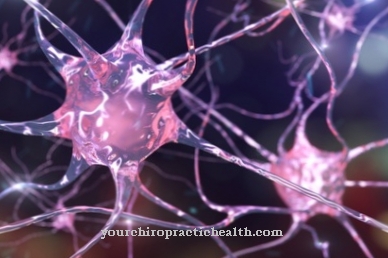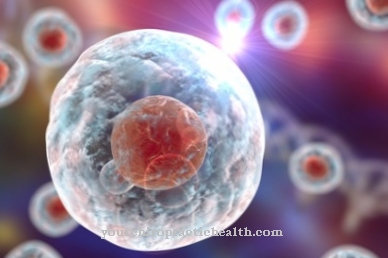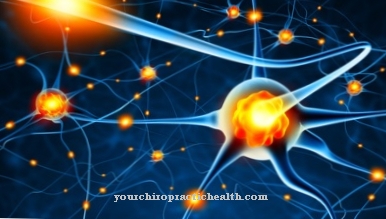Motor skills differs in the areas of gross motor skills and fine motor skills. The gross motor skills are the basis of spatial orientation and summarize large movements of the body. Gross motor skills are movement coordination and the ability to react. Fine motor skills describe the dexterity of the hands, facial expressions and oral motor skills. Gross motor and fine motor development are closely related.
What is the motor skills?

Doctors understand motor skills to mean the entirety of all actions that take place in the human body during all movements, i.e. all movement sequences controlled by the human brain. Basic motor skills are coordination skills such as movement coordination. Muscle tension is necessary for basic motor movements to occur. The best example of this is the sense of balance.
A distinction is made between gross motor skills and fine motor skills. Each area can be promoted individually. When it comes to fine motor skills, we initially think of hands, for example holding a pen, but facial expressions and oral motor skills are also part of this.
Gross motor skills include all major movements such as climbing, running, jumping and keeping balance. These are processes for which a large range of motion is necessary. Without posture, balance and posture, target motor skills cannot be performed.
For gross motor skills, larger muscle groups are used, but the functions can already fail due to very small missing movements. Fine motor skills develop by the age of three and stabilize by the age of five.
Function & task
Every muscle movement in the body is controlled directly or indirectly by the brain. The motor end plate plays a major role in this. It is a synapse and creates the connection between a motor nerve cell and a muscle cell.
So that gross and fine motor skills can function properly, humans need different coordination skills.A distinction is made between seven basic skills: coupling skills, differentiation skills, responsiveness, balance skills, orientation skills, rhythmic skills and adaptability. The coordinative abilities work together with the conditional abilities in every sporting performance.
The motor areas of the cerebral cortex design and plan every single movement and send the information to the muscles for execution. Two other brain structures are necessary for the information to be implemented smoothly: the cerebellum and the basal ganglia.
Targeted movement can only be performed smoothly and precisely with the support of the cerebellum. An example of this is the movement of the extended finger to the tip of the nose. Several coordinated muscle contractions of the shoulder, arm and hand are necessary for this movement to proceed properly. It is the same when we stand on one leg, for example. The cerebral cortex makes additional fine corrections in all movements. If we lift one leg, the cerebellum gives the muscles the commands that prevent it from falling over. All of this happens unconsciously.
The basal ganglia, in turn, permanently choose between desired and undesired action sequences. Only in this way is fine motor movement possible in the correct direction and at the correct intensity. Just by balancing, we manage to touch a delicate object such as a raw egg so that it does not break. In turn, initiated movements can be translated into precise and fluid sequences of action through the cerebellum.
You can find your medication here
➔ Medicines against concentration disordersIllnesses & ailments
More than half of all nerve cells in the brain are located in the cerebellum. This makes it easy to see how complex the neural connections in this area of the brain are. Even in early childhood there can be severe motor development disorders, which can usually be treated well.
Larger amounts of alcohol disrupt the function of the cerebellum considerably and the same effects become visible as with someone suffering from the cerebellum. Balance disorders occur, the affected person staggers and walks with his legs apart. The language also seems choppy. The cerebellum is also heavily involved in motor learning. If it is damaged, we can no longer learn properly.
The brain areas of the basal ganglia and thalamus filter out the correct movement patterns and allow the impulses to be passed on to the cerebral cortex and thus the movement to be carried out. In order to be able to make complex, learned movements, the filtering in the basal ganglia is of the utmost importance.
However, the basal ganglia cannot initiate movement. In Parkinson's disease too much information gets stuck in this filter so that movement impulses are not passed on to the cerebral cortex. Noticeable disturbances are recognizable: the patient has a rigid facial expression, swallows less than a healthy person and his arms hardly swing when walking. He also only lifts his feet slightly, so that he often trips. Slow tremors and muscle stiffness are other symptoms of this disease.
With Huntington's disease, the hereditary disease, exactly the opposite happens: the filter lets way too many signals through. Muscle movements set in suddenly and unexpectedly, the patient has little control over them, for example making faces or flinging arms and legs back and forth.
As you get older, most motor tasks require more focus. A disorder of gross motor skills is quickly visible because the person affected is severely restricted. Cycling, hopping on one leg, or exercising are very difficult for people with gross motor disorders.
Damage to the cerebrum almost always leads to motor disorders in the musculoskeletal system. There are postural control problems and paralysis. Either the motor control of the muscles is restricted, completely absent, or the muscle tone increases.
Diseases of the basal gait lines, on the other hand, cause movement disorders because strategic planning and the initiation of all movements are restricted.
























.jpg)



